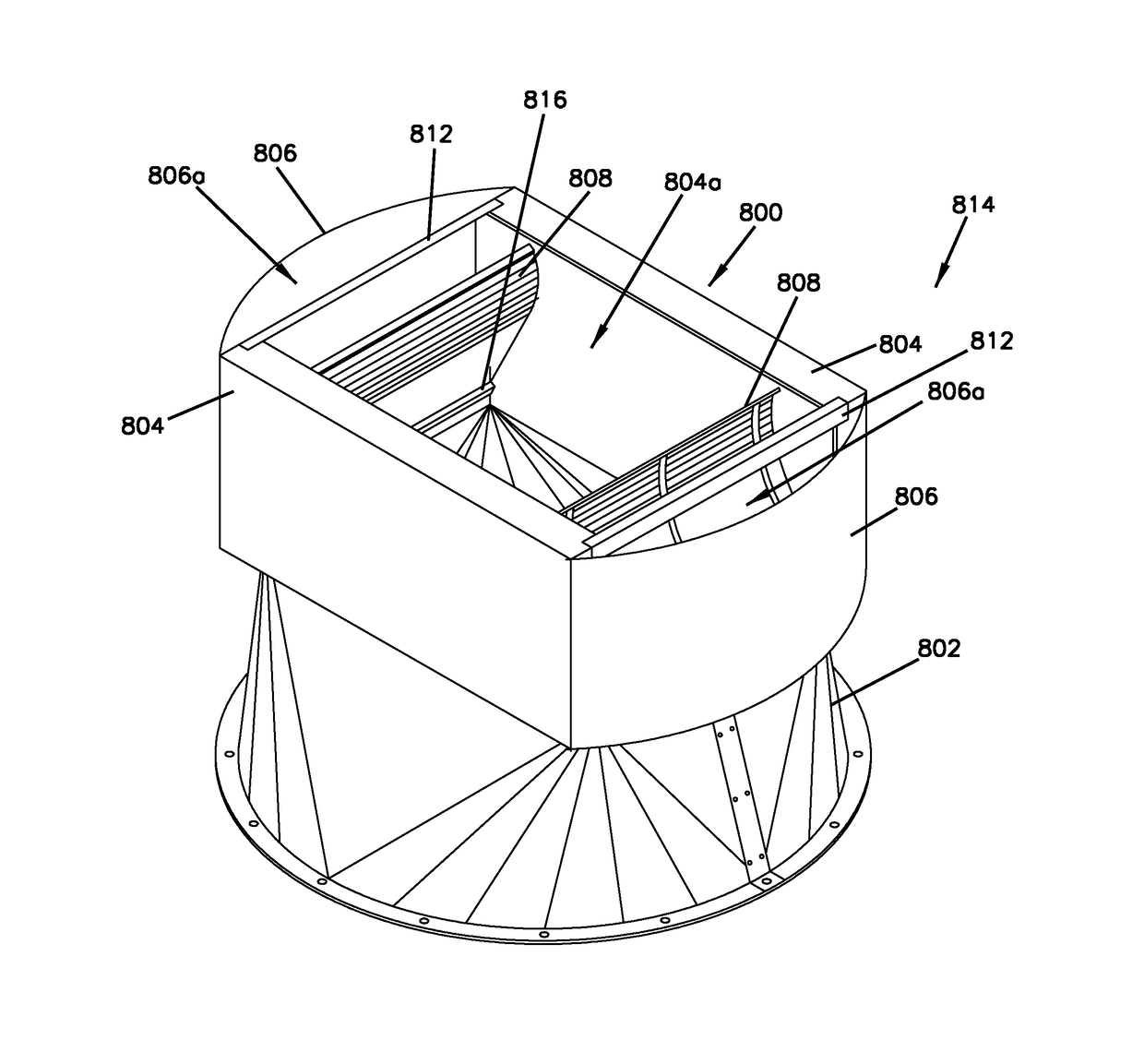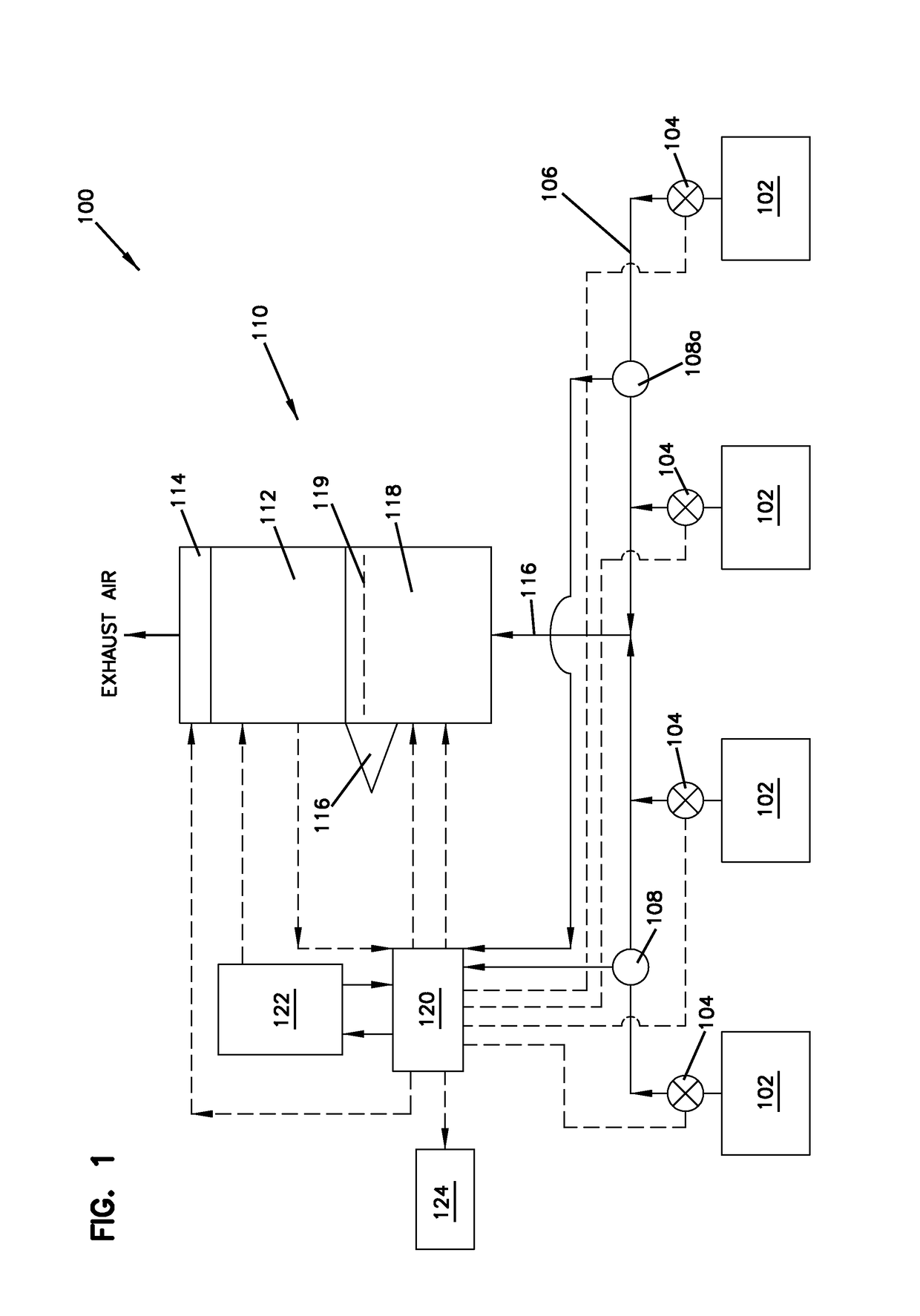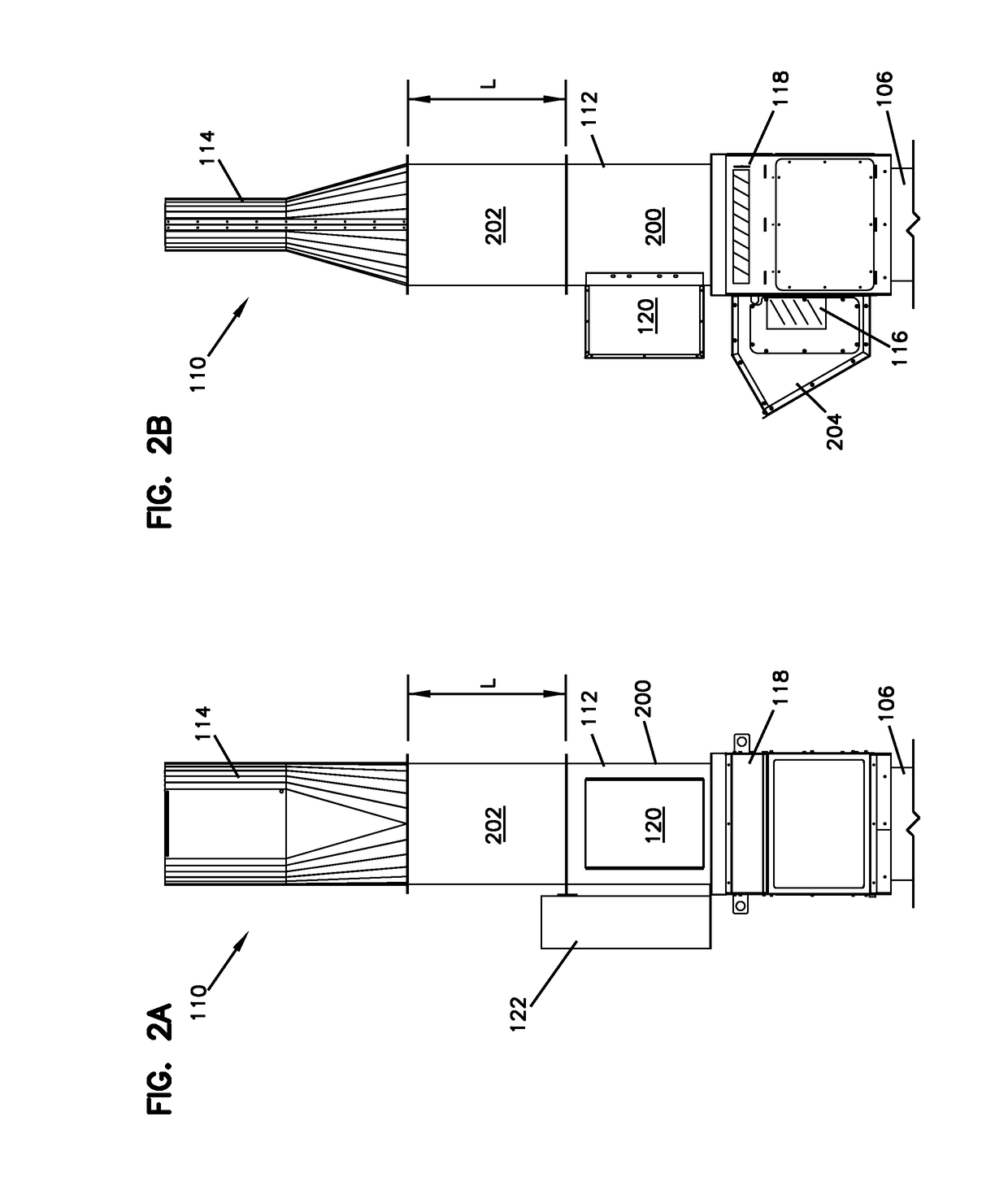Variable-volume exhaust system
a variable-volume exhaust system and exhaust system technology, applied in ventilation systems, lighting and heating apparatuses, heating types, etc., can solve the problems of reducing discharge velocity, reducing fan energy consumption, and not realizing fan energy savings
- Summary
- Abstract
- Description
- Claims
- Application Information
AI Technical Summary
Benefits of technology
Problems solved by technology
Method used
Image
Examples
Embodiment Construction
[0030]FIG. 1 depicts a schematic diagram of a variable-volume exhaust system 100. The system 100 exhausts air from one or more spaces 102, typically fume hoods used in laboratory environments, although other spaces are contemplated, as described below. A valve, damper, or other flow-preventing apparatus 104 is located at an outlet of each space 102, thereby selectively preventing flow when desired. Each damper 104 is connected to a duct 106, which may be in a header or other configuration. Located in the duct 106 is at least one static pressure sensor monitor 108. Additional static pressure sensors 108a may be installed elsewhere in the duct 106 for a number of purposes including, but not limited, to redundancy of sensors, averaging of values, or integrity monitoring. The duct 106 is connected to a fan system 110 that includes a fan 112, an outlet nozzle 114 connected to the fan outlet and a bypass damper 116 and bypass air plenum 118. The variable-volume exhaust system 100 is monit...
PUM
 Login to View More
Login to View More Abstract
Description
Claims
Application Information
 Login to View More
Login to View More - R&D
- Intellectual Property
- Life Sciences
- Materials
- Tech Scout
- Unparalleled Data Quality
- Higher Quality Content
- 60% Fewer Hallucinations
Browse by: Latest US Patents, China's latest patents, Technical Efficacy Thesaurus, Application Domain, Technology Topic, Popular Technical Reports.
© 2025 PatSnap. All rights reserved.Legal|Privacy policy|Modern Slavery Act Transparency Statement|Sitemap|About US| Contact US: help@patsnap.com



